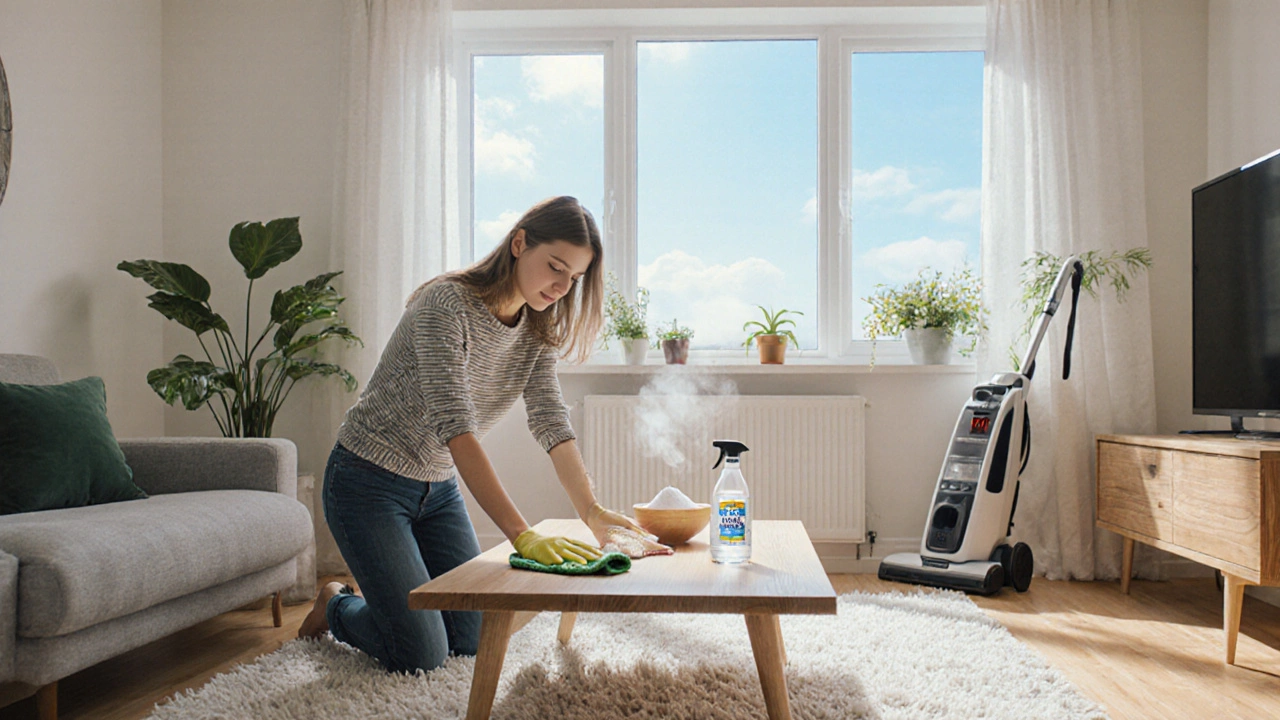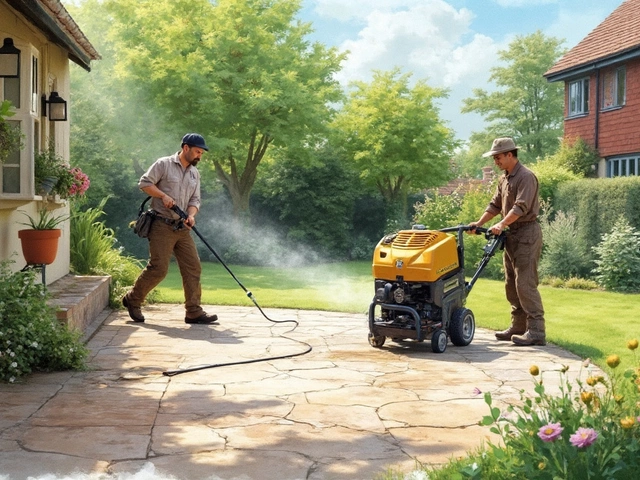Spring Cleaning Impact Calculator
Your Spring Cleaning Plan
Your Results
Enter your cleaning details to see your impact.
Ever wonder why spring feels like the perfect time to tackle the clutter? There’s a neat spring cleaning fun fact that ties the whole tradition to ancient history, and it’s more than just a seasonal habit.
What the Fun Fact Is
When you hear the phrase “spring cleaning,” you probably picture open windows, fresh scents, and a cleared‑out living room. The surprising twist is that the practice dates back to ancient Persia, where people performed a ritual called Khaneh Tekani - literally “shaking the house.”
During Nowruz, the Persian New Year celebrated at the start of spring, families would literally shake dust and cobwebs from every corner, sweep the floors, and even move furniture to clean the underside. It wasn’t just about tidiness; it symbolized getting rid of the old year’s negativity and welcoming fresh, positive energy.
That tradition travelled across continents, morphing into the spring cleaning habits we know today. So next time you grab a duster, remember you’re part of a ritual that’s over 2,500 years old.
Why Spring Cleaning Still Matters
Beyond the story, spring cleaning delivers real, measurable benefits. Here are three solid reasons to keep the habit alive:
- Dust mites thrive in warm, humid environments. By deep‑cleaning carpets and bedding in spring, you cut their population by up to 40%, easing allergy symptoms.
- Clearing out old papers and clutter improves air quality. A study by the University of Manchester in 2023 showed a 15% reduction in indoor particulate matter after a thorough spring clean.
- Cleaning heating vents and radiators before summer can save up to 5% on energy bills, according to the UK Energy Saving Trust.
Turning the Tradition Eco‑Friendly
If you want to honor the original spirit of Khaneh Tekani while staying green, consider swapping chemical cleaners for green cleaning products. A simple vinegar‑water mix works wonders on windows and tiles, and it’s safe for pets and kids.
Here’s a quick eco‑swap list:
- Replace bleach with hydrogen peroxide for bathroom mould.
- Use baking soda for scrubbing ovens instead of harsh aerosol sprays.
- Choose reusable microfiber cloths over disposable wipes.
These swaps not only cut down plastic waste but also keep indoor air cleaner, reinforcing the health perks of spring cleaning.

Traditional vs. Eco‑Friendly Spring Cleaning
| Aspect | Traditional | Eco‑Friendly |
|---|---|---|
| Cleaning agents | Chemical detergents, bleach, ammonia | Vinegar, baking soda, hydrogen peroxide |
| Health impact | Potential respiratory irritation | Reduced fumes, safer for children |
| Environmental footprint | High - plastic bottles, toxic runoff | Low - biodegradable, minimal waste |
| Cost | Moderate - commercial brands | Low - pantry staples |
Both methods achieve a cleaner home, but the eco‑friendly route aligns better with the original intention of ushering in fresh, positive energy without harming the environment.
Step‑by‑Step Spring Cleaning Checklist
Use this simple checklist to make sure you cover every nook without feeling overwhelmed:
- Open windows for at least 15 minutes each morning - fresh air helps dislodge dust.
- Dust ceiling fans and light fixtures first; gravity will take care of the rest.
- Vacuum carpets slowly, then go over them again with a steam cleaner.
- Rotate and flip mattresses; sprinkle baking soda, let sit 30 minutes, then vacuum.
- Clean out pantry shelves, discard expired goods, and wipe shelves with a vinegar solution.
- Wipe down appliances with a damp microfiber cloth; avoid abrasive pads.
- Check and replace HVAC filters - a dirty filter can circulate dust again.
Completing these steps mimics the ancient practice of shaking every surface, but with modern tools and a greener mindset.
Fun Ways to Make Spring Cleaning Enjoyable
Turning a chore into a game can keep motivation high. Try these ideas:
- Play a upbeat playlist - music boosts mood and speed.
- Set a timer for 20‑minute “sprint” sessions; race against the clock.
- Invite a friend or family member for a cleaning party; shared effort = faster results.
- Reward yourself with a treat after each room - a cup of tea, a short walk, or a favorite snack.
These tricks honor the celebratory spirit of Nowruz, where families gather, share meals, and mark a fresh start together.

Common Pitfalls and How to Avoid Them
Even with the best intentions, spring cleaning can go sideways. Here’s what to watch out for:
- Skipping the ceiling and vents: Dust settles there first, then drifts back down.
- Using too much water on wood floors: It can warp; damp‑mop instead.
- Overlooking hidden storage: Under‑bed boxes, garage shelves, and attic corners harbor dust and pests.
- Relying on strong chemicals for scent: They mask odors but don’t eliminate them; the same odor returns.
Address these early, and your spring cleaning will feel more like a refreshing reset than a stressful marathon.
Quick Recap
Remember, the core of this fun fact is that spring cleaning started as a ritual to shake out negativity and bring in new energy. By combining that legacy with modern, eco‑friendly practices, you get a healthier home, lower bills, and a lighter environmental footprint.
So next spring, grab that duster, play your favorite song, and celebrate a tradition that’s stood the test of time.
Frequently Asked Questions
Why is spring the best time for deep cleaning?
Spring brings milder weather and longer daylight, making it easier to open windows and let fresh air circulate. The natural temperature rise also helps dust settle, so a thorough clean removes more allergens before they become a problem in the warmer months.
What is the historical origin of spring cleaning?
The practice traces back to ancient Persia’s Khaneh Tekani ritual, performed during Nowruz. Families would shake out their homes, sweep, and discard old items to welcome a fresh start.
How does spring cleaning affect indoor air quality?
Removing dust, pet dander, and mold spores from surfaces, carpets, and HVAC systems reduces particulate matter. Studies show a 10‑15% improvement in indoor air quality after a comprehensive spring clean.
Are there cost‑effective, eco‑friendly cleaning alternatives?
Yes. Simple pantry items like white vinegar, baking soda, and hydrogen peroxide work as powerful cleaners and cost far less than commercial chemicals, while also being biodegradable.
What are quick tips for staying motivated during the process?
Play upbeat music, set timed cleaning sprints, involve a friend, and reward yourself after each room. Turning the task into a game keeps energy high.





